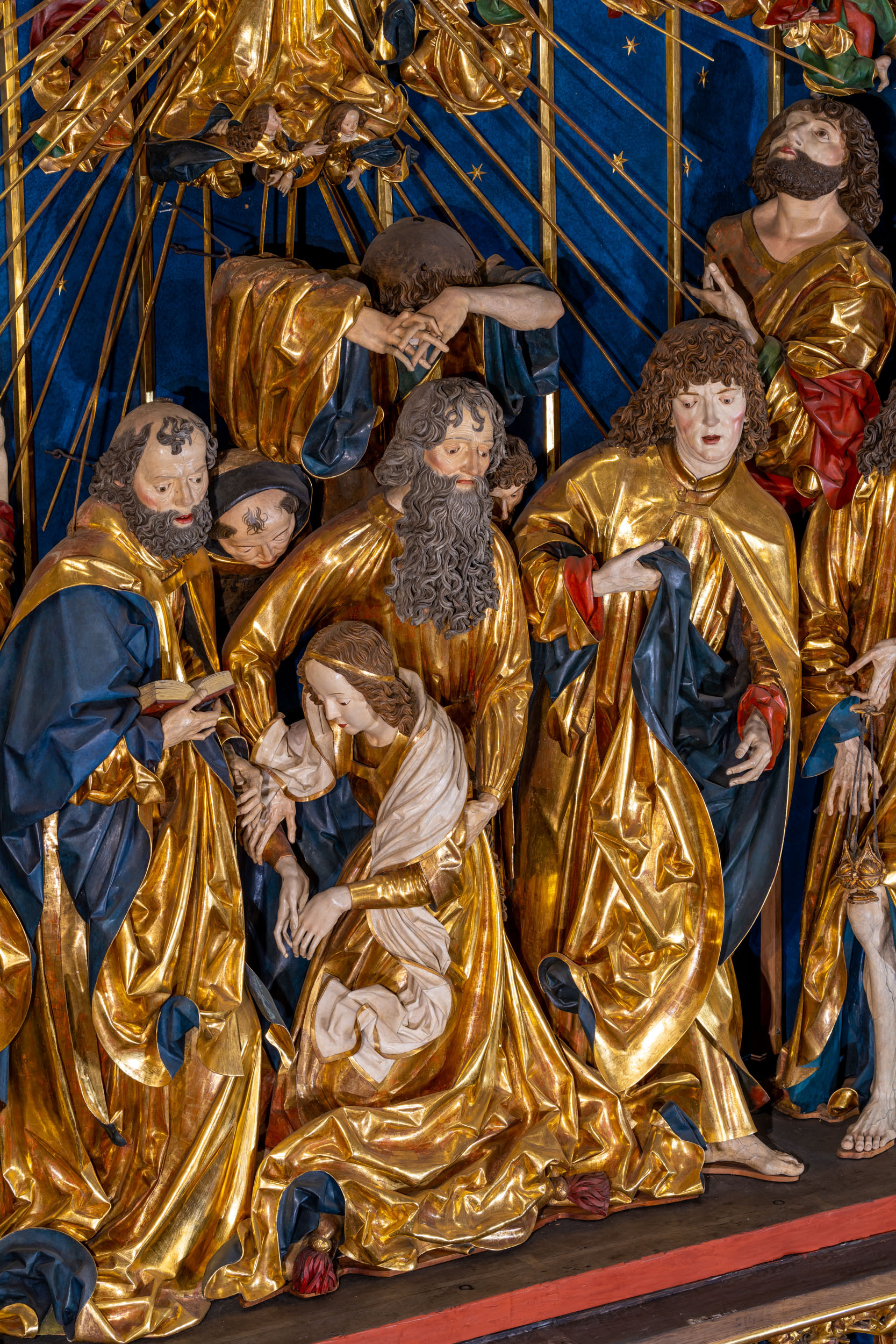
Dormition Scene of the Blessed Virgin Mary
- Description
- The main scene of St Mary's altarpiece tells the story of the end of Mary's earthly life. Stwosz emphasised the timeless dimension of the Death and Assumption. The scenes placed on the shallow proscenium of the wardrobe are not a story, but a solemn presentation. In depicting the Dormition, the sculptor drew on the formula developed in Central Europe for Mary's Last Prayer. The new presentation accentuates the supernatural character of the event. For this composition, the contrast is crucial: the beautiful and delicate hands of Mary next to the worked, vein-covered hands of the caring disciple. The apostles standing at the sides of the cabinet embrace the semi-circle placed in the centre of the Assumption scene. This semicircle completes the arcade of the frame. The whole composition is bound together by the figure of the disciple clasping his hands in a gesture of despair. The apostle's fingers form a symbolic canopy over Mary's head. The figures, with agitated, sometimes even theatrical poses, are wrapped in multi-layered and dynamically draped robes. The way they are shaped is a reworking of the 'core and shell' principle developed in late Gothic sculpture. The coats of the apostles are precisely the shells in which the cores of strong, muscular bodies are enclosed. The folds typical of Stwosz are often repeated here - the inverted lining of the mantle is arranged in a pointed shape, and its field is filled with finer folds, crumpled in all directions.